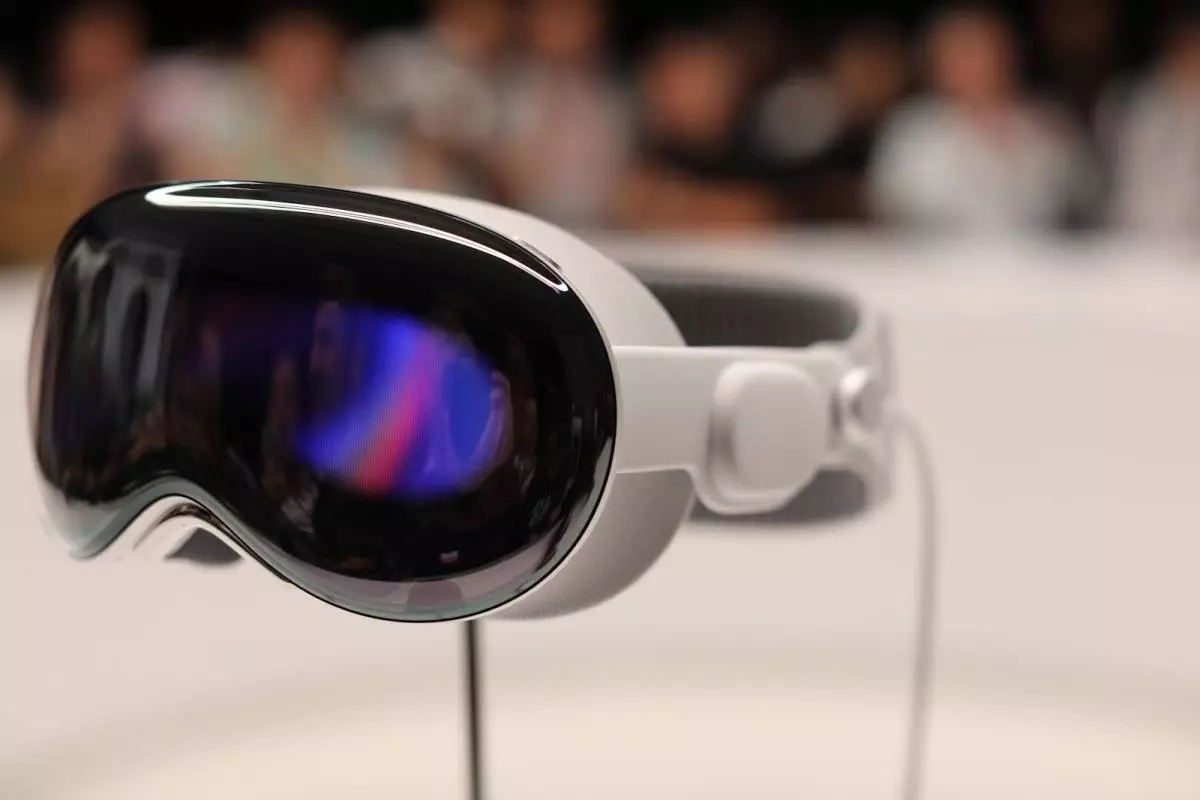Apple has made headlines once again by announcing the integration of its generative AI platform into the much-anticipated Vision Pro augmented reality headset. As part of the upcoming visionOS 2.4 update, this news represents a significant step forward for Apple in the realm of spatial computing. The excitement surrounding this development comes alongside a beta version, which is currently accessible to developers, with a public rollout scheduled for April. This dual focus on cutting-edge technology and user-friendly applications positions the Vision Pro not just as another gadget but as a transformative component in the user’s digital ecosystem.
Apple’s approach to updating its systems has always been methodical, and the Vision Pro is no exception. The company plans to roll out its AI capabilities in stages, ensuring that each release optimally enhances user experience. Initial offerings will revolve around well-known functionalities such as text generation, image creation, and various writing utilities designed to simplify the user’s workflow. Features like Rewrite, Proofread, and Summarize promise to enhance productivity significantly and show Apple’s focus on refining the user experience rather than simply adding flashy new features.
A point of contention, however, lies in the headset’s current text composition methods. The existing typing method, which requires users to pinpoint individual letters with their gaze, followed by a pinching gesture to select, can be unwieldy for those looking to compose longer texts. While voice dictation offers some relief, it is notably not a perfect solution. Apple’s recent advancements with AI-enhanced Siri provide a glimpse of what could be possible, but many users may still find the current systems limiting.
Recognizing the limitations of traditional input, Apple is betting heavily on voice interaction as a primary mode of communication with the Vision Pro. This emphasis on sophisticated voice recognition and AI writing tools is designed to attract more users and integrate the headset into everyday workflows seamlessly. The features like Message Summaries and email Smart Reply could serve to foster deeper interaction within applications without detracting from the user’s primary focus, making the device more cohesive with everyday tasks.
This intuitive design could potentially redefine how users engage with digital content, as the AI can facilitate a more fluid experience in multiple applications — minimizing friction and enhancing efficiency. The seamless blend of voice commands with AI-generated responses enables users to command their digital environments in previously unimagined ways.
A standout feature of the visionOS 2.4 update is its incorporation of the Image Playground. This functionality integrates directly with the existing Photos app, allowing users to generate visual content simply by speaking their requests. By breaking barriers to creativity and facilitating immediate execution, Apple is providing a tool that not only enhances the individual’s creative process but also invites collaboration and exploration in entirely new ways.
While these innovative features are not entirely new to Apple’s ecosystem, their presence on the Vision Pro underscores the company’s commitment to enriching the spatial computing experience. Users can expect to engage with familiar applications combined with fresh AI-powered capabilities to elevate traditional tasks.
Complementing the visionOS 2.4 release is an innovative iPhone app that works in conjunction with the Vision Pro headset. This app fulfills multiple functions, including the capability to browse content available on visionOS. By allowing users to view TV shows and movies directly on their iPhones, Apple acknowledges the considerable physical discomfort that extended headset usage can cause—especially regarding battery life limitations.
This thoughtful design choice not only enhances user comfort but also promotes a more enjoyable viewing experience by letting users enjoy content without being tethered to the headset all the time. Furthermore, the app introduces a useful feature for guest access management, where the primary user can oversee guest interactions seamlessly, thus preserving system integrity while promoting collaborative use.
Apple’s forthcoming generative AI features for the Vision Pro, set against the backdrop of the visionOS 2.4 update, illustrate a clear intention to redefine spatial computing. By focusing on natural language processing, user-friendliness, and creative facilitation, Apple is paving the way for deeper integration of technology in daily tasks. This latest venture not only enhances individual productivity but also heralds a new era in user engagement with augmented reality—one that promises to reshape the digital landscape for years to come.

